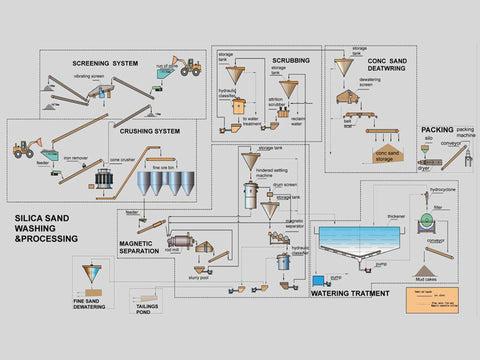Understanding the Role of Silica Sand in Water Filtration and Purification

Silica sand, with its remarkable ability to filter and clean water, has become an essential component in water treatment technologies around the world, including in Indonesia. Known for its effectiveness in eliminating impurities and purifying water, silica sand helps improve water quality for a variety of purposes.
This article will explain why silica sand is so effective for water treatment and how this media works in modern water treatment systems, providing important insights for consumers and industries that require it.

Why is Silica Sand Effective for Water Treatment?
Silica sand, or often referred to as quartz sand, is one of the most widely used filtration media due to its stable physical and chemical properties. It is formed from almost pure silicon dioxide, has a high degree of hardness and is resistant to most chemicals. Its unique granule structure allows silica sand to capture dirt particles efficiently, so the water that passes through this sand layer becomes cleaner and clearer.
In addition, silica sand is highly effective in reducing turbidity, eliminating pathogens, and removing organic matter from water. This makes silica sand a top choice in filtration systems for the treatment of drinking water and industrial wastewater. For this reason, silica sand is widely used in the manufacture of water filters in various sectors, including residential, commercial, and industrial.

How Silica Sand Works in Water Treatment Systems
Silica sand works on the principle of mechanical filtration. When water flows through a layer of silica sand, large and small particles, including microorganisms, are trapped between the grains of sand. This process is known as physical filtration. In addition, silica sand also performs an adsorption process, where certain substances stick to the surface of the sand. The combination of these two processes provides highly effective water treatment results.
In a more technical context, the effectiveness of silica sand can be enhanced by using silica sand that has been activated or modified to increase its adsorption capacity. This technology enables silica sand to address a wide range of water quality challenges that may be encountered in water treatment in Indonesia, from saltwater to water contaminated by industrial effluents.
.

Benefits of Silica Sand for Water Treatment in Indonesia
Indonesia, with its natural wealth and geographical diversity, has unique challenges in water treatment. Silica sand offers an effective and economical solution to this challenge. The use of silica sand in water treatment not only improves water quality but also helps in maintaining the sustainability of water resources.
In some areas of Indonesia that experience problems with hard water or water that contains a lot of minerals, silica sand is effective in reducing turbidity and preventing scale formation. This is critical to ensuring the efficiency and longevity of water treatment equipment and infrastructure.
Guide to Selecting Quality Silica Sand
Choosing high-quality silica sand is key to effective water treatment. Here are some criteria to consider when selecting silica sand:
-
Material Purity: Ensure that the silica sand selected has a high level of silicon dioxide purity.
-
Grain Size: Choose a grain size that suits your filtration system needs. The right size will increase filtration efficiency.
-
Chemical Resistance: The silica sand used should be resistant to chemicals that may be contained in the water to be treated.

Conclusion
Silica sand is a highly effective and economical filtration media for water treatment. With its superior ability to filter and purify water, silica sand supports the improvement of water quality in Indonesia and enables more sustainable utilization of water resources.

.png?width=50&height=50&name=Logo_Watermart_Perkasa-removebg-preview%20(1).png)
.png?width=352&name=download%20(16).png)

